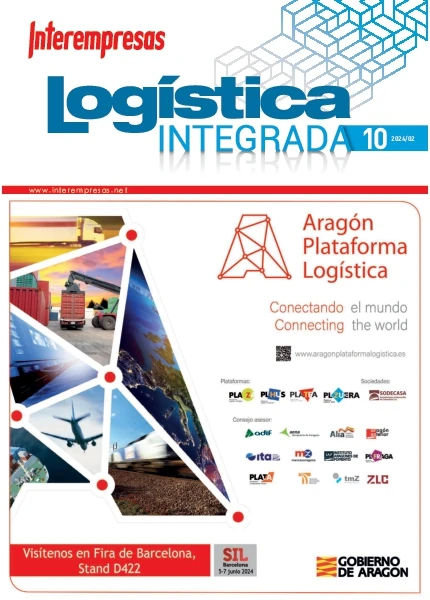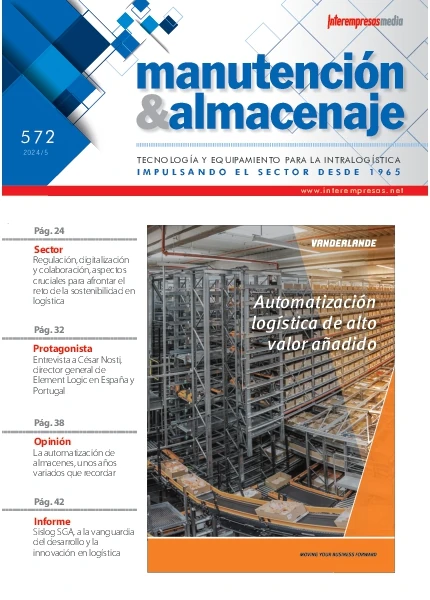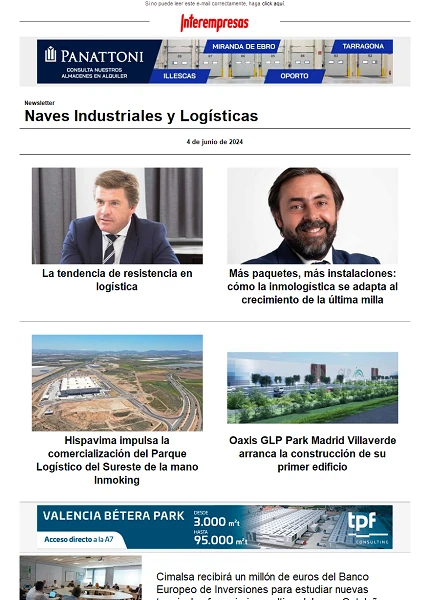The Catalan logistics enhances its Mediterranean corridor
September 3, 2010
The Departament de Política Territorial i Obres Públiques de la Generalitat of Catalunya - DPTOP - through the public company Cimalsa, and the City Council of Tarragona continue taking steps towards the second phase of the Camp the CISG. The City Council approved the amendment of the General Plan of Tarragona which allows the installation of the new phase. On the other hand, the DPTOP has initially approved the urban Master Plan of road, rail and logistics infrastructure to the Penedès, yielding an average of 425,6 million euros annually in the Catalan economy and until 5.770 direct jobs.
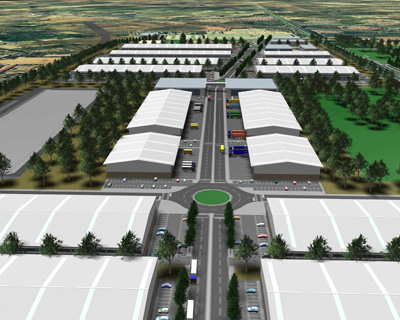
The second phase of the Camp, in progress
The second phase of the Camp the CISG will have an area of 39 hectares, which added to the 42 hectares of the first, you configure one of the major logistics centres in Catalonia and create 3,500 jobs. Investment estimated to the urbanization of this area is of € 31.7 million and is expected that the works begin in 2012. In tertiary activities of CISG Park offices, hotel and business services, retail and catering will be installed to supplement the supply of services to companies and workers of the CISG. Given that the tertiary Park will not be in the enclosure of the CISG, also be will serve the neighboring environment in which all citizens will benefit.
This second phase is entirely located in the municipality of Tarragona. Expected that he has some 185,000 square metres for logistic and complementary uses, 64.700 will be intended for a park of 47,000 square meters public green zones and tertiary activities. Also, Cimalsa give 20,000 square metres to the City Council of Tarragona for the construction of new facilities.
The total investment for the urbanization of this area is of 31.7 million euros and is expected that the works may start in the year 2012.
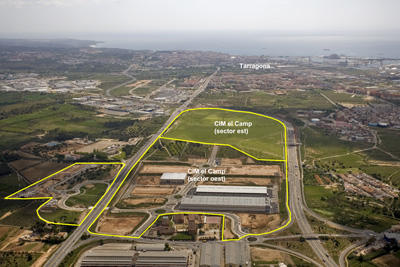
This second phase of the CISG the Camp, will be integrated into the first phase in a single enclosure with access controlled vehicles and surveillance 24 hours by security cameras. This is a very appreciated in the logistics sites where moving large quantities of goods of different value. Public facilities and the Park of tertiary activities in which you will enter through a new road linking Les Gavarres with La Canonja crossing the T-11 Highway and the A-7 highway will be outside the logistical.
Developed the first phase of the CISG
The CISG the Camp is located between the municipalities of Reus, Tarragona and La Canonja, in the second metropolitan concentrations of Catalonia. This strategic position favours the access to the logistics platform via the AP-7 motorway, bounded by the T-11 (previously N-420) from Tarragona to Reus and the A-7 (previously N-340) from Valencia to Barcelona. Another advantage of its location is that heavy vehicles can directly access high capacity roads. However, the CIM is well connected to the Reus airport, situated only 3 km and with the port of Tarragona to 5 km away.
The first phase of the Camp the CIM, sector West, has already urbanized and occupies 42 acres mainly in municipality of Reus and in a very small part in Tarragona and La Canonja. More than 80% of the logistical ground of the first phase is occupied or reserved and there are currently installed or in the process of installing the following companies: Fragadis, Seur, Intatore, La Cartuja, Autocars Plana, TDN, Transportes Souto, TXT logistics, Salvat logistics, Transabadell and Asocap carriers training centre.
The first phase of the CIM is also installed emergency 112 Center, recently opened and will work to more than 500 people.
All investments made by Cimalsa in the western sector of the CISG the Camp amounted to EUR 51.4 million.
Planning integrated for new intermodal Center of the Penedès
The Commission of urban planning of Catalonia (CUC) has initially approved the urban Master Plan (PDU) that collects and sorts the set of actions needed to boost the Intermodal Center of Penedès.
This new intermodal Center will cover an area of 177 hectares, in the municipal terms of L'Arboç, Banyeres del Penedès and Castellet i la Gornal and Sant Jaume dels Domenys. Also, it will combine economic and logistic activity with services, clean industries and training areas and will include an intermodal goods terminal, connected to a future in the Mediterranean rail corridor, a new entrance on the AP-7, and a vial of connection between the highway and the A-7. It will also expand open spaces protected with 125 hectares of plot for not building and will include corrective measures of the environmental impact and a functional design fine-tuning.
The PDU originally approved by the CUC is the first step of the necessary urban planning that will boost the DPTOP to make reality the intermodal Center of the Penedès (known as LOGIS Penedès), combining road-rail-soil policy actions.
The intermodal Centre del Penedès (or LOGIS) is one of the intermodal logistics centres provided for in the Plan of transport infrastructure in Catalonia and is consistent with the determinations of the Territorial Plan of the Camp de Tarragona.
This PDU provides the document framework which will be, then, all the instruments of more detailed planning that links each infrastructure development with the momentum of the areas of economic activity, services and equipment for training and research.
Initially, once approved, the PDU will be submitted now to public information and report of Councils and other concerned administrations.
In addition to the reserves of land necessary to begin to foster the development of the intermodal Centre, the PDU contains a landscape study prepared by the Centre for research and projects of landscape of the Polytechnic University of Catalonia (UPC). This study identifies the most important aspects to take into account in planning to minimize the environmental impact, at the time that already provides the corrective measures to be applied.
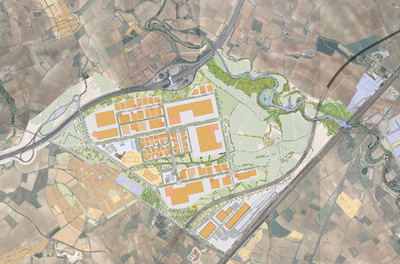
Also, the PDU includes an impact assessment territorial, elaborated by the Department of geography of the University of Rovira i Virgili (URV) and another study of economic impact produced by the Department of Economics at the same University. According to this study, the activity generated by the intermodal Centre in the Penedès would generate an average of 425,6 million euros annually in the Catalan economy and even 5.770 direct jobs. However, taking into account the indirect and induced impacts, this effect on employment could be, also in an intermediate scenario, at 9,330 jobs.
The public investment estimated to realize necessary infrastructures and urbanization is estimated at EUR 126.7 million. The study of the URV expected that this fact will stimulate private investment added in warehouses and logistics of EUR 344,9 million facility.
The scope of the approved PDU is 404,5 hectares. Of these, the Plan intended 177 to infrastructure and areas of economic activity of the intermodal Center. In addition, the PDU extends the open spaces with a regime of special protection in 125 hectares, mainly in la riera de Marmellar and the Hill of El Papiol. The rest, until you reach the 404,5 hectares, is not subject to any changes.
The urban master plan bets so that the new intermodal center incorporates the necessary mechanisms of saving water and energy, as well as for the reuse of rainwater and installation of photovoltaic solar panels. He is expected that the works of the LOGIS Penedès could start in 2013, with a period of execution of approximately two years.
Distribution of the Intermodal Centre in the Penedès
The 177 hectares of the intermodal Centre in the Penedès itself is distributed as follows:
- Logistics and intermodal activity: the PDU engaged intermodal activities with direct rail access and 69 hectares to logistics activities in 27 hectares. Thus, an intermodal cargo terminal, with an initial length of 550 m, expandable to 750 meters will be constructed. At first, it would be connected to the railway Iberian wide and, in the future, the broker of international bandwidth between Tarragona and Castellbisbal that will be part of the Mediterranean corridor.
- Clean industry and services: the LOGIS Penedès will feature 16 acres of space for clean industry and 5.8 hectares more for services that require these companies.
- Green areas: a total of 37 hectares of the area of the intermodal Center are reserved for open spaces and green areas. The internal roads of the Centre will occupy 18 hectares.
- Equipment: the PDU also provides a framework for equipment of more than 40,000 square meters, destined to host training activities and logistics-related r & d.
- A new access to the motorway AP-7 and a vial of connection between the highway and the A-7 highway. This last Road will be the subject of a specific special plan to ensure the visual and acoustic isolation from the town of Banyeres del Penedès. In this sense, is expected to a linear park with the function of cushioning the impact of this infrastructure.

